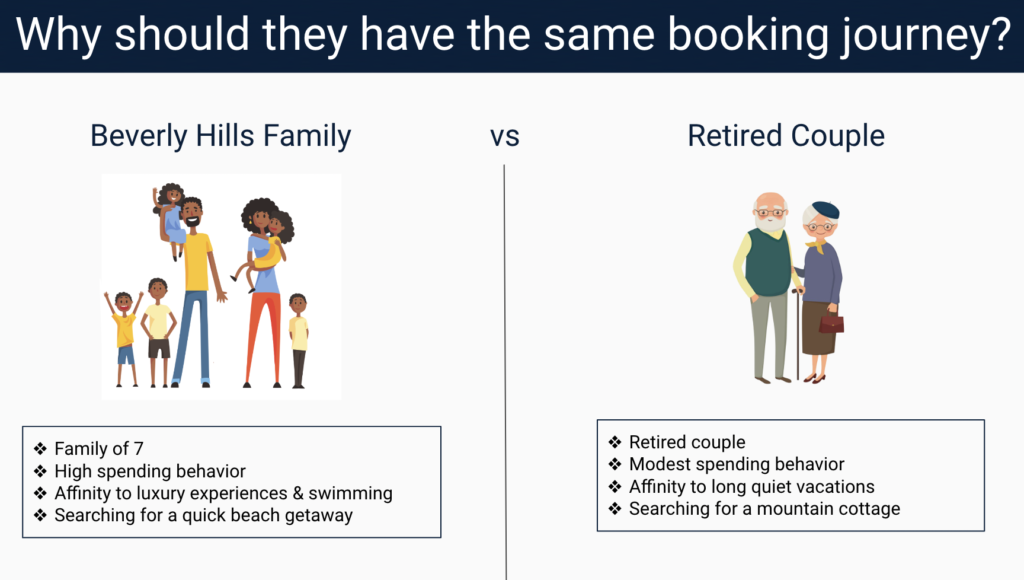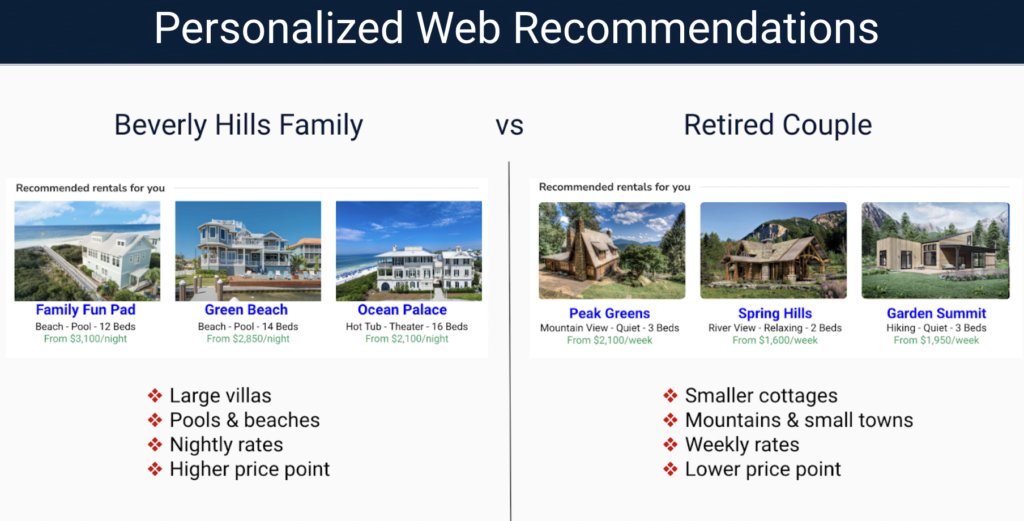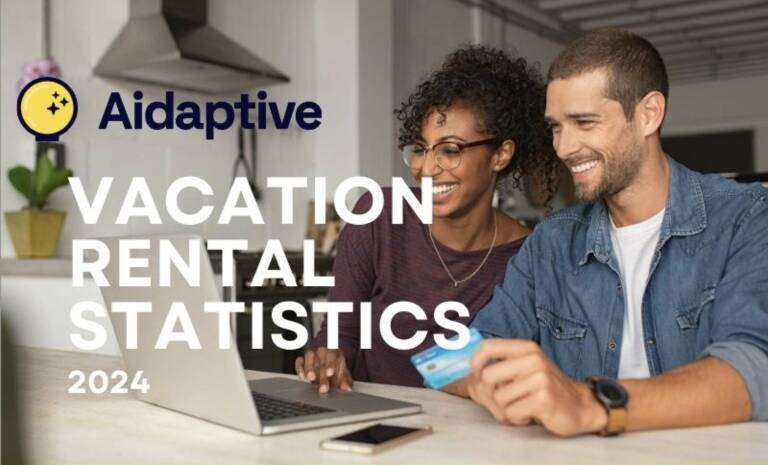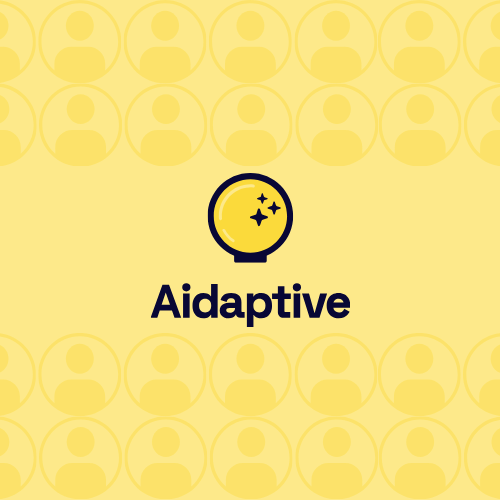Spencer Rascoff’s warning to VRMs
As summer comes to a close and 2023 is right around the corner, the world’s instability is gradually trickling into all aspects of society. I think this is a great time to reflect, amidst all the global chaos, and motivate the vacation rental industry to finish the year strong.
Three weeks ago in Nashville, I attended my first Data and Revenue Management (DARM) conference. This must have been a Guinness World Record for the most revenue managers under one roof. More importantly – VRM competitors of all sizes collaborated to tackle the next frontier… the problem identified – what’s next?

If there’s one person that could’ve used a crystal ball – it’s Spencer Rascoff, the keynote speaker at DARM. I’ve had the luxury of speaking with Spencer a few times over the years and without a doubt, he’s consistently on his feet ready to put out the next fire. I think a quick overview of his career will show how he’s become a ‘professional fire firefighter:’
- 2000: Founded Hotwire
- 2005: Founded Zillow
- 2019: Founded Pacaso
What’s so special about all those years? Well…
- 2001: Dotcom crash
- 2007: Global financial crisis
- 2020: COVID pandemic
Subsequent to founding each company, Spencer encountered an unforeseeable catastrophic force that upended businesses all over the world. That being said, he managed to weather every storm and turn these anomalies into opportunities. Makes sense why Spencer named his venture capital firm 75 & Sunny – there’s always sunshine after the storm.
And as Simon Lehmann would say with an umbrella in hand, “when it’s sunny out, look for the rain.”
When all the cards get tossed into the air…
When all the cards get tossed in the air, an opportunity opens to grab them.
Business cycles are tough to anticipate. Entering the post-pandemic world of hyper-inflation, increasing travel costs, and unpredictable logistics chains – VRMs have an opportunity to capitalize.
I asked Manish Hirapara, the CEO of PeakActivity, “what would you say is the most common mistake/distraction businesses are currently making?” His reply:
“Not imagining the future. There’s a blend of real-time data, experience, and commerce that will be drastically different. Spending the cycles now to begin crafting tests on how you can reach your next-generation audience in new ways is imperative — even while playing defense in an up-and-down economy”
In short – don’t just sit around and imagine the future, rather you should prepare for it by implementing new concepts today. Now is the time for VRMs to embrace ecommerce strategies and test new revenue generating initiatives (especially if it will take some time to test and implement).
Revenue management isn’t driving more revenue anymore
The overarching theme of DARM was how revenue managers need to get creative to drive more revenue. Dynamic pricing simply isn’t creating those 30-40% gains like it was two years ago. While it’s tough to pinpoint an exact culprit, a logical perspective is that everyone and their neighbor is using dynamic pricing algorithms. In other words, the market has equalized.
Dynamic pricing is not rocket science. It’s similar to how a broker prices a home for sale: look at the time of year, gauge the neighborhood, identify amenities, and compare nearby properties.
In reality, the attractiveness of dynamic pricing tools lie in their robust user interfaces and automation capabilities.
So now that almost every vacation rental owner is using some form of dynamic pricing, the data aggregators in the industry have partnered up, such as KeyData & PriceLabs. Their partnerships are said to bring “On-Demand Data” but in reality, it’s just more broad trend data to further captivate VRM’s attention until they release more products.
There are many shortcomings with data aggregators pricing your properties:
- Most of your competitors are using the same data
- The commingled VRM data is not specific to your business
- Generic anonymized data is not specific to the individual guest & their behaviors
- Static data doesn’t factor ‘in the moment’ trends/decisions (aka customer intent)
Bottom line – you can only adjust pricing so much before you start negotiating against yourself. VRMs must identify new paths to revenue to maintain consistent revenue growth… and this requires thinking outside the box.
So what’s next for revenue management?
From the 100+ VRM meetings I’ve taken in the last year, I’ve seen a drastic increase in revenue managers taking a more active role in their marketing departments.
For a long time, VRM marketing has been viewed as a tool to stay relevant and promote deals. While all those remain true, the concept of brand loyalty is evolving into a pathway to become the starting point for every guest search.
Without argument, OTAs have owned the starting searches for travelers. How? Their communication ecosystem looks like the one above. Every email, text, web experience, advertisement, and device receives personalized property recommendations with OTA branding.
This is how OTAs cut through the noise, with predictive personalization across the entire booking funnel. And until now, scaling a personalized communication ecosystem has only been a luxury of big tech and OTAs.
Enter Jarvis ML – democratizing big tech capabilities for small business. Jarvis ML empowers VRMs with the same scaleable personalization as the big tech OTAs. The only way to personalize every booking journey is through personalization… and the only way to scale that is through advanced machine learning (ML).
- Here’s a link to info on Jarvis ML’s $16M seed round that supports our mission to empower VRMs with OTA-grade ML.
- Here’s a post on what machine learning is, and how it can be used for VRMs.
In short – imagine all the sales emails you get. Then think about all the sales emails you send to your guests… then think about all the companies ALSO targeting your guests. There’s unlimited digital noise in the playing field & the only way to cut through the noise is with personalized booking journeys to each guest based on their preferences, affinities, and purchasing power.
Another way to build brand loyalty (& profit from it) is through ancillary revenue routes like Minoan. I really appreciated my time with Marc Hostovsky, founder of Minoan, especially since he has a robust background in ecommerce.
With Minoan, VRMs can profit from all the effort they put into interior design and curated product collections (shampoo, furniture, other products). Genius! Not only do you get to provide a great experience to your guests, you’re then able to profit by selling those products through the Minoan store.
This is not an advertisement, rather a genuine appreciation for enriching VRMs with out of the box concepts.
Out with Revenue Management, In with Revenue Optimization
In its current state, dynamic pricing platforms are a tool to make the life of a revenue manager easier. With all the fancy levers, automation capabilities, and vast distribution channels – dynamic pricing solutions have become the go to platforms for revenue managers to control their pricing outputs. Just like Salesforce empowers marketing teams to optimize communications, dynamic pricing platforms have enabled higher deployment efficiency amongst revenue managers.
So what’s next – how are revenue managers supposed to get creative when they’re all using near identical strategies in competitive markets?
I spoke with John An, founder of TechTape and one of the most innovative revenue managers in the game. He explained why he named his company TechTape:
VRMs are utilizing multiple technologies to manage their operations and revenue generating initiatives. All these siloed tech solutions bring a lot of noise for lean teams with minimal bandwidth – especially since the tech systems don’t talk to each other. The goal of TechTape is to ‘tape’ together multiple technologies to optimize revenue growth.
This is precisely where dynamic pricing companies are going – adding products that optimize revenue from other angles… starting with the website.
Ask yourself this – why would Beyond Pricing get into website design if dynamic pricing was sufficient? That’s because pricing is only one part of the equation. With their launch of Signal, Beyond Pricing is building bespoke websites for VRMs. By reducing friction using best ecommerce practices, Beyond Pricing is optimizing all aspects of a VRM’s digital presence.
Bottom line – VRMs must interconnect all aspects of their digital presence, from pricing to marketing, in order to bring predictability to revenue growth.
Website optimization drives 20-40% revenue growth
The fork in the road for VRMs: why focus on the website when the OTAs make life so easy?
Every time I hear this question, it’s usually from VRMs that get over 80% of their bookings from OTAs. So in reality they’re saying: “there’s no hope for us to drive direct bookings, I’ll just stick to what I’ve been doing.”
This is why OTAs refer to their customers as “users” on their earnings calls. The only other industries that call their customers “users” are big pharma & social media. With the help of robust channel managers syndicating listings to 100+ OTAs, many VRMs are hooked on the OTA drug. Makes sense why OTAs are forecasted to dominate 90% of all bookings by 2025.
Let’s use the ecommerce industry as a case study & dive deeper into how they’re swinging back the pendulum from Amazon, Walmart, and other ‘ecommerce OTAs.’
The founder of Shopify, Tobi Lutke, promotes that while “Amazon is trying to build an empire, Shopify is trying to arm the rebels.” Think about it – OTAs didn’t even have to rewrite the playbook, they just took it straight from Amazon!
So what does “arming the rebels” entail?
To start, it means empowering small businesses with big technology to take back their customers. For VRMs, it’s time to level up from pen n’ paper to OTA-grade tools that drive direct bookings. If a VRM can successfully drive more than 50% direct bookings, they’ve unlocked the key to long term autonomy because Direct Bookings = Valuable Demand Data.
An easy way to start is by examining your existing website for friction points. Friction is where the customer gets blocked from checking out: unclear next steps, long forms to fill out, dead ends on property pages, static generic content, and overall website clunkiness.
Treat your website as a widespread umbrella to capture all web traffic – and you can distinguish your website from 99% of your competitors using Predictive Personalization. Think about this: why should these two potential guests have an identical booking journey?
They shouldn’t! This is friction at its finest – and now you can reduce this friction with Predictive Personalized Recommendations based on each guest’s preferences, affinities, and purchasing power. A website powered by Jarvis ML’s predictive personalization will guide both guests on their own unique booking journeys:
Well then, how does reducing friction & personalizing a VRMs booking journey add revenue? Let’s look at a few metrics VRMs should consider:
- Average Booking Value (ABV)
- Return On Ad Spend (ROAS)
- Revenue Per Visitor (RPV)
- Click Through Rate (CTR)
- Customer Acquisition Costs (CAC)
- Lifetime Value (LTV)
All the above metrics are important to monitor as VRMs drive direct bookings. It’s important to note that personalizing direct booking journeys to each guest’s preferences and affinities will improve all the above metrics & in turn, drive additional revenue:
- ABV: by personalizing recommendations based on preferences & purchasing power, a guest is more likely to book a premium property tailored to them. A guest will always choose a GREAT property over a decent or good option.
- ROAS: what’s the point of expensive digital advertising if your website isn’t converting web visitors efficiently? A website that adapts to each web visitor’s behavior & preferences will drastically improve conversion rates (or the cost of the revenue generated by paid ads).
- RPV: this is a pure efficiency and efficacy metric. While ROAS has two variables (the return/revenue and the ad spend cost) this has a static denominator. It’s like website Conversion Rate (CVR), but with a focus on what matters: revenue. Once you dial in on RPV, personalization will increase the metric and directly impact bottom line revenue.
- CTR: this is an engagement metric which gives insight into how much friction is blocking web visitors from engaging. For example, many VRM homepages have property recommendations to capture the attention of anonymous web visitors. By identifying how many web visitors clicked a recommendation, your web team can identify what’s working & what you can double down on. Increasing CTR should be a high priority to convert direct bookings & drive more revenue.
- CAC: once you have a database of direct booking guests, you’re able to capture their email, preferences, affinities, and more. Jarvis ML unlocks this data so you can lower the acquisition cost by generating direct-repeat guest & becoming the starting point for every guest search (just like the OTAs). Personalization leads to high brand loyalty and lowers CAC.
- LTV: arguably the most important metric, the holy grail is direct-repeat bookings. With Jarvis ML’s automated personalized communication ecosystem, VRMs can cut through the digital noise to increase marketing engagement & create brand loyalty. Increasing guest LTV will trickle positive results into all the aforementioned metrics.
As we transition into a cookie-less world where most web visitors will be anonymous, existing OTA platforms will dominate. Now is the time to take control of these metrics and understand your digital competencies, weaknesses, and opportunities.
For more information on how direct bookings = ecommerce, watch this concise demonstration of how VRMs can implement ecommerce best practices today.
VRMs need to hire a Director of Ecommerce
Every time a VRM doubles in size, they need to become 20% more efficient according to scaling laws. This efficiency margin must be driven by a lean team that translates efficient work into profitability. So if most VRMs have a revenue management team, why don’t they have a team dedicated to improving digital booking journeys?
In reality – many marketing managers are not website experts. Most VRM marketing managers don’t touch the website at all – they outsource it to a company like BlueTent or Atlas. This leads to a pay-to-play relationship resulting in a static website because just to talk to those service providers, you have to pay for their time. Makes sense why VRMs don’t want to spend time (money) improving their websites.
I asked VRM recruiting legend Steve Trover of Better Talent “what type of skillset could the VRM industry use the most in this competitive landscape?” He agreed that ecommerce proficiency is “sadly becoming a lost art in our industry and it’s a big need. Heavy reliance on OTAs for everything is not a good long term business strategy.”
When OTA’s are spending heavily on their advanced ecommerce platforms, why are VRMs doing the exact opposite? VRMs need to run towards their data & take control of their guest relationships! To make this actionable, here’s 5 key value adds a Director of Ecommerce can bring to your VRM immediately:
- Develop a digital strategy roadmap with actionable KPIs/OKRs to drive consistent revenue growth
- Bridge together the marketing & sales teams to identify new revenue generating initiatives
- Constantly resolve direct booking inefficiencies & evolve conversion strategies to increase Return on Ad Spend (ROAS)
- Interconnect digital marketing strategies (ads, emails, website, channels) to ensure a 360 degree approach
- Automate marketing initiatives and workflows to keep your team lean but maximally effective
How’s that for creative revenue growth?
Final thoughts
The most common responses I get from VRMs regarding direct bookings are:
- We’ve been operating for 50 years and we’re doing just fine
- We’ll focus on direct bookings later
My usual replies:
- What you’ve been doing the last 50 years may not work the next 5 years. Artificial Intelligence is not a bluff (like it has been in the past) and the OTA threat to VRM autonomy is real. This threat persists in ecommerce as well, which is why the Direct To Consumer (DTC, basically direct bookings for retail) movement has gained substantial momentum and is proactively swinging back the pendulum from Amazon into the hands of small DTC businesses. The ecommerce industry is the perfect case study for VRMs.
- As consumer privacy and data protection laws expand rapidly, acquiring new direct booking guests is compounding in difficulty. Cookies are a thing of the past, which means all VRMs web visitors are becoming more anonymous by the day. If VRMs don’t start building their guest databases and focusing on long term guest retention now, they should expect to depend on OTAs for the remainder of their existence.
Who am I to make these claims & statements? Well, here’s my LinkedIn. I’m bridging the gap between hospitality, real estate, and technology.
As a disruptor in multiple industries, I promote cross-industry strategies that strengthen a company’s competitive edge. Unfortunately, I’ve operated in industries where major players muscle their way into the end zone regardless of who gets hurt. So once the dust settles in this Wild West vacation rental landscape, big tech and major companies will likely be victorious… but along the way, I’ll be empowering many growing businesses to control their own destiny.
Thanks for reading – reach me anytime with questions, ideas, or just to brainstorm.
Cheers,
Evan






